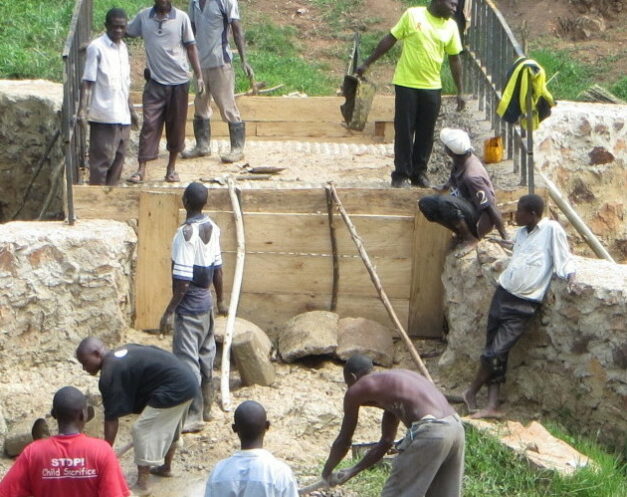Bringing back Uganda’s Rwambu Wetland
Published as:
Case study
Published on:

In the not so distant past, the people of Rwambu, Uganda were up against a quickly shrinking water table, largely created by agricultural expansion and bad management of the wetland. Water no longer sufficiently saturated the ground and erosion occurred all over. As a result, water supply, both for drinking and household needs, was in very short supply. Women and children were forced to walk two hours down the hillsides to the wetland in the valley to access water.
Applying Nature-Based Solutions
From 2012 to 2015 we collaborated with the RAIN Foundation and our local partner Joint Effort to Save the Environment (JESE) in the Rwambu catchment. In just a few years, we have seen the following results:
- The wetland was demarcated and zoning was introduced, allowing community members to fetch water, feed cattle, catch fish and harvest medicinal plants and reeds at separated, best located places in the wetland.
- Farming within the wetland area was banned and affected families compensated with alternative livelihood options higher up in the catchment.
- Uphill, stones were stacked at farmer’s fields to allow for rainwater to infiltrate the ground, in turn stopping soil erosion.
- Trees were planted at the bald spots high in the catchment, allowing further recharging of the water table.
- Downstream, former leaky latrines were replaced by functional ones and strategically relocated to avoid any contamination of present water sources.
- Local communities are glad to see the reappearance of a number of indigenous species around the lake. This indicates that the services and values of the wetland are returning. Furthermore, the wetland is recovering, displayed in its growth. A growing wetland also means a higher capacity to filter and recharge the groundwater.

